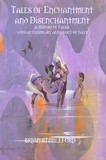Tales of Enchantment and Disenchantment
A History of Faerie, with an Exemplary Anthology of Tales
by Brian Stableford
cover by Mike Hoffman
US$49.95/GBP 32.99
6x9 tpb, 672 pages
ISBN-13: 978-1-61227-838-4
The Contes de fées, defined here as tales that contain fées, i.e.: “fays” (as opposed to “fairies,” which in British literary history referred to imaginary entities often different from the French fées), were invented by aristocratic women of the 17th century, such as Madame d’Aulnoy, the Comtesse de Murat, Madame Leprince de Beaumont, etc.
In making visible the operations of the human heart, they also did so with their torments, fears and resentments: the tightly-laced corset of social convention, the catastrophe of arranged marriages; the tyranny and frequent brutality of those in legal control of their lives and fortunes.
Such aspects of everyday life were exaggerated by the conventions of the genre: the princesses were the most beautiful in the world, or the ugliest; the prisons in which they were contained were inaccessibly tall towers or lightless subterrains, often guarded by dragons; their captors were ogres, hags or giants, often addicted to setting them impossible tasks to complete, under the threat of dire punishment. And the fantasies of their salvation were exaggerated in consequence, beyond all reasonable expectation: the magic wand of a good fay, and, perhaps even more implausibly, the trustworthy love of a good man.
Since the 1970s, there has been a spectacular increase in the popularity of a kind of fantasy that has revivified many of the imaginative materials previously developed in the contes de fées, and they can now be seen as a key link in a strand of imaginative literature that extends forwards from Classical literature and Medieval Romance all the way to a significant sector of contemporary literary production, and its extensions into visual media, connected not merely by the complex transference of imagery, but by the underlying psychology of composition and consumption. In order to understand modern fantasy fully, it is therefore necessary to understand its roots in previous literary genres, and one of the most important is the conte de fées.
This volume also includes 38 exemplary stories sampled from 1696 to 1914, forming the most complete anthology devoted to the History of the Faerie to-date.
Brian M. Stableford has been a professional writer since 1965. He has published more than 70 science fiction and fantasy novels, as well as several authoritative non-fiction books. He has also translated many of the works reviewed herein for Black Coat Press.
TABLE OF CONTENTS
Introduction.
The Culture of Literary Salons.
The Invention of Contes de Fées.
The Initial Publication of Contes de Fées.
The Fall of the Empire of the Fays.
The Work of the Major Writers.
Fellow Travelers.
The Contraband Renaissance.
The Decadence of the Fays.
Voices in the Wilderness.
The Afterglow..
Conclusion.
Further Reading.
AN ANTHOLOGY OF EXEMPLARY TALES.
PART I: 1696-1715.
PARADIGMS 1696-1697.
Marie-Jeanne L’Héritier: The Enchantments of Eloquence; Or, The Effects of Mildness
Charles Perrault: The Beauty in the Dormant Wood.
Henriette-Julie de Murat: Perfect Love.
Charlotte-Rose Caumont de La Force: More Beautiful than a Fay.
EXPLORERS 1697-1698.
Marie-Catherine d’Aulnoy: Green Worm..
Henriette-Julie de Murat: The Prince of Leaves.
Marie-Catherine d’Aulnoy: Princess Belle-Etoile and Prince Cheri
Henriette-Julie de Murat: The Isle of Magnificence.
The Story of Princess Blanchette and Prince Verdelet
The Story of Grandimont, King of the Arsacides, and Princess Philomele
FELLOW TRAVELERS 1697-1715. 297
Catherine Bernard: The Rose-Bush Prince.
François Fénelon: The Story of King Alfaroute and Clariphile.
Jean de Préchac: The Queen of the Fays.
Chevalier de Mailly: The Magician King.
Catherine Durand: The Fay Lubantine.
Author Unknown: Princess Patientine in the Forest of Erimente.
PART II: 1716-1788. 353
THE CONTRABAND RENAISSANCE 1716-1750. 353
Author Unknown: The Flying Ship.
Louise Cavelier: The Invisible Prince.
Attributed to Catherine de Lintot: Tendrebrun and Constance.
Marie-Madeleine de Lubert: Princess Camion.
Philippe de Caylus: Princess Azerolle; Or, Excessive Constancy.
Carl Gustaf Tessin: Faunillane; Or, The Yellow Child.
Jeanne-Marie Leprince de Beaumont: Prince Fatal and Prince Fortunate
Charles Duclos: Acajou and Zirphile.
THE DECADENCE OF THE FAYS 1751-1788.
Author Unknown: Cornichon and Toupette.
Attributed to Marie-Antoinette Fagnan: Minet-Bleu and Louvette.
Marianne-Agnès Falques: Durboulour; Or, The Benevolent Lioness.
Nicolas Bricaire de Dixmerie: Lindor and Delie.
Jean-Jacques Rousseau: Queen Fantasque.
Marie-Jeanne Riccoboni: The Blind Man.
Nicolas Edme Restif de la Bretonne: Sireneh.
PART III: AFTER THE REVOLUTION..
VOICES IN THE WILDERNESS 1790-1870.
Sophie Rostopchine de Ségur: The Little Gray Mouse.
Édouard Laboulaye: The Castle of Life.
Charles Baudelaire: The Gifts of the Fays.
THE AFTERGLOW 1871-1914.
Catulle Mendès: The Last Fay.
Jean Lorrain: Melusine Enchanted.
Catulle Mendès: Prince Lys and the Wave of Snow.
Frédéric Boutet: The Valley Named Solitude.
Anatole France: The Story of the Duchesse de Cicogne and Monsieur de Boulingrin, Who Slept For a Hundred Years in the Company of the Beauty in the Dormant Wood.
